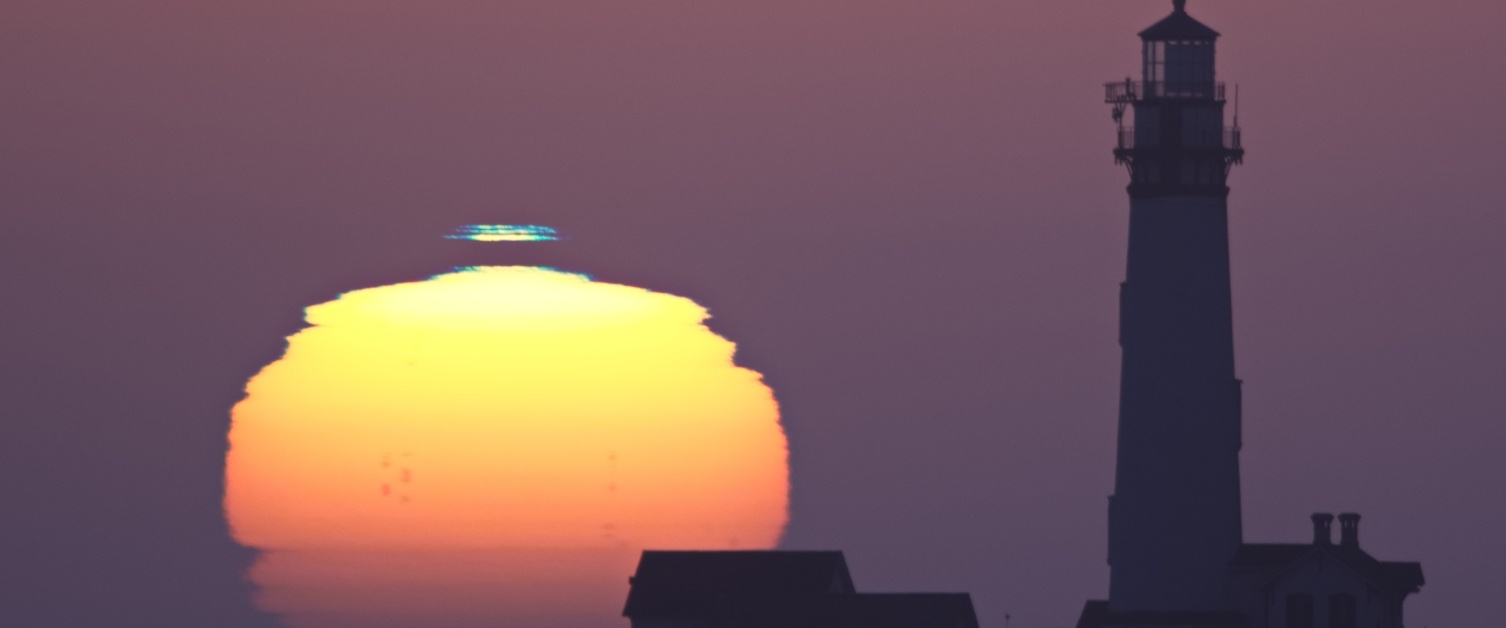Pigeon Point Green Flash
- By Jan Null
- Apr 15, 2024
Pigeon Point Green Flash by Jan Null
.jpg)
As a long-time meteorologist, I have known of and have been watching for the Green Flash whenever I ventured to the coast at sunset. Those efforts were unsuccessful until about four years ago when I moved to the central California coast and began photographing sunsets regularly with a telephoto lens. While still nearly impossible to see with the naked eye I now capture it more often than not.
Along the way I have found that there are two types of Green Flashes. The one most commonly seen with the naked eye is a tiny “bubble” of emerald on the horizon just after the sun’s disk slips below the horizon. These occur when the ocean’s surface is warmer than the overlying air resulting in an inferior mirage, similar to mirages that are seen above a desert or hot roadway, and the shorter wavelengths of green light are refracted.
The variety of Green Flash that I most often capture photographically are mock-mirage flashes which happen when there is an inversion with a layer of warm air just above the cool water. These occur when the sun’s disk is still visible but too bright and occur too rapidly for any color separation to be visible with the naked eye. However, when photographing the sun through a telephoto lens, it’s possible to see the color appear to “bubble up” and separate itself from the sun’s disk enough that the refraction of green light is discernible. That’s when I press the shutter button.
That’s what happened with this photograph at one of my favorite spots on the San Mateo County coast, Pigeon Point Light Station. I had planned to catch the sunset with the lighthouse in the foreground on a relatively mild day with the weak inversion. This provided multiple paths of refraction and two distinct Green Flashes. (Nikon D500, 600 mm, f10, 1/320 sec, ISO 250)
More Green Flash images can be found at: https://ggweather.com/flash/
